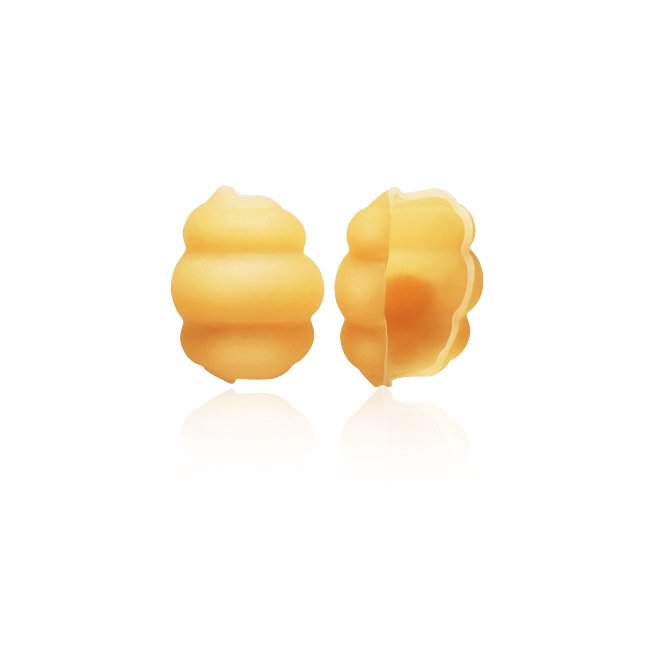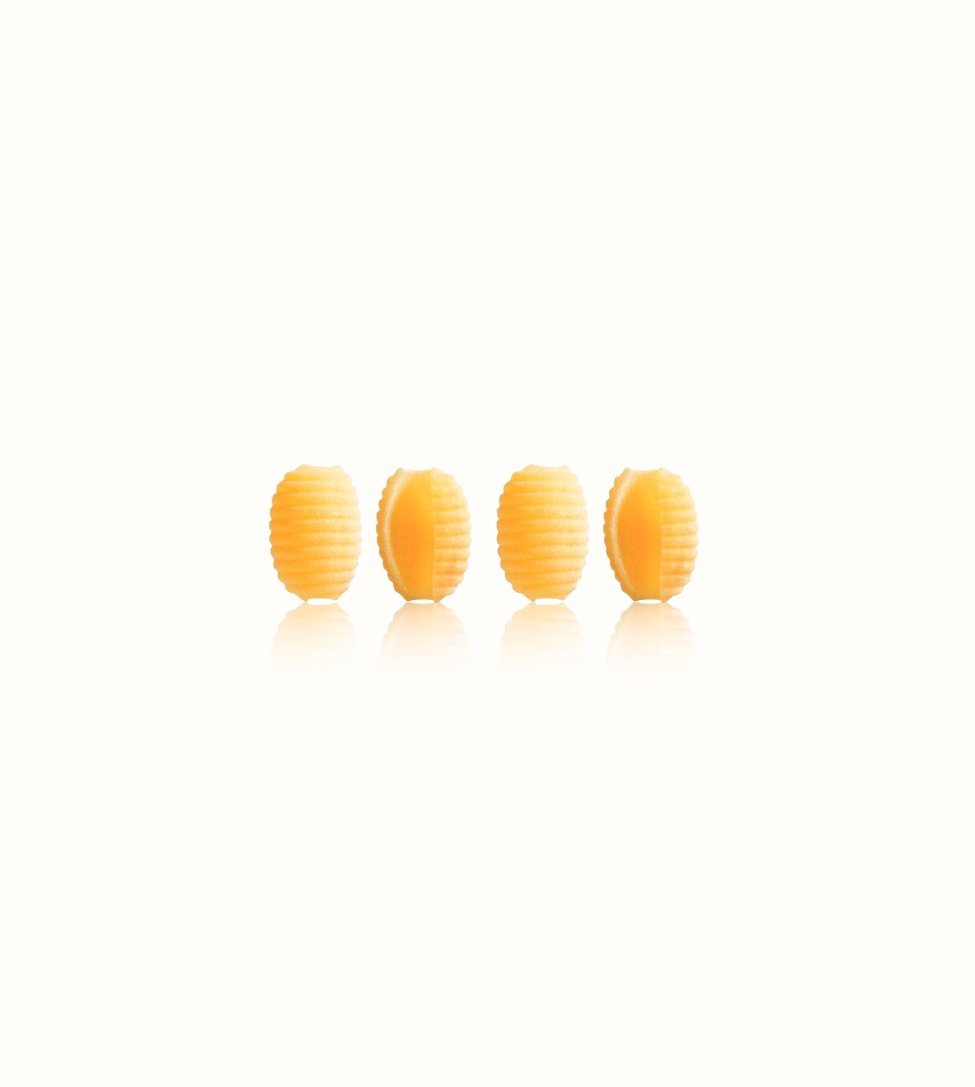
Characteristics, History and Pairings
The pasta shape called gnocco was first made by Neapolitan pasta makers inspired by the shape of potato gnocchi. The result is a short oval and concave shaped pasta with the characteristic grooves of the original gnocchi. Thanks to its hollow shape, this pasta can sop up all types of sauces making the need for a “scarpetta” (when bread is used to clean up the sauce left on the plate) redundant.
Gnocchetti sardi, however, are a different story. This pasta shares the similar shell shape with gnocchi, but is much, much smaller (approximately 2 cm) and the story of its original name is quite peculiar. Originally from Sardinia, gnocchetti sardi are the oldest and most popular shape of pasta on the island.
Hand-made by dragging little cubes of pasta on special grooved boards, the original Sardinian name is malloreddus, which in the local dialect means “calves”. The name derives from the round and chubby shape of this type of pasta, which in the eyes of Sardinian shepherds resembled the tummies of newborn calves.
Cooking Time
11 minutes for gnocchi
10 minutes for gnocchetti sardi
Region of Origin
Gnocchi is a type of pasta originally from Campania, while gnocchetti sardi pasta, as the name gives away, comes from Sardinia.
Best Pairings
Gnocchi pasta, thanks to its hollow shape, captures large quantities of sauce and is often paired with thick tomato-based sauces, from the simplest, with tomato and basil, to the most rich, like meat ragu. On the other hand, the most traditional Sardinia dish with gnocchetti sardi is malloreddus “alla campidanese”, made with a rich sausage ragu sauce and served with a sprinkle of fresh pecorino sardo cheese on top.
Ingredients
Durum wheat semolina and water.
Average nutritional values for 100 g of raw product
– Energy: 1508 kJ / 356 Kcal
– Fat: 1.5 g
– of which saturates: 0.4 g
– Carbohydrate: 72 g
– of which sugars: 3.0 g
– Fibre: 3.0 g
– Protein: 12 g
– Salt: < 0.01 g
Cooking Tips
Do you cook pasta in a sustainable way? Here are a few tips that can make a difference.
1. Don’t waste water, use only the necessary amount: 1 litre of water for every 100 grammes of dry pasta
2. Cooking with a lid will save time and gas or electricity and the water will boil sooner
3. Add the salt when the water starts boiling and add the pasta immediately after
4. Put the lid back on halfway through the cooking time, switch off the gas (or electric hob) and finish cooking your pasta in the hot water inside the covered pot.
See all Valdigrano classic pasta.
